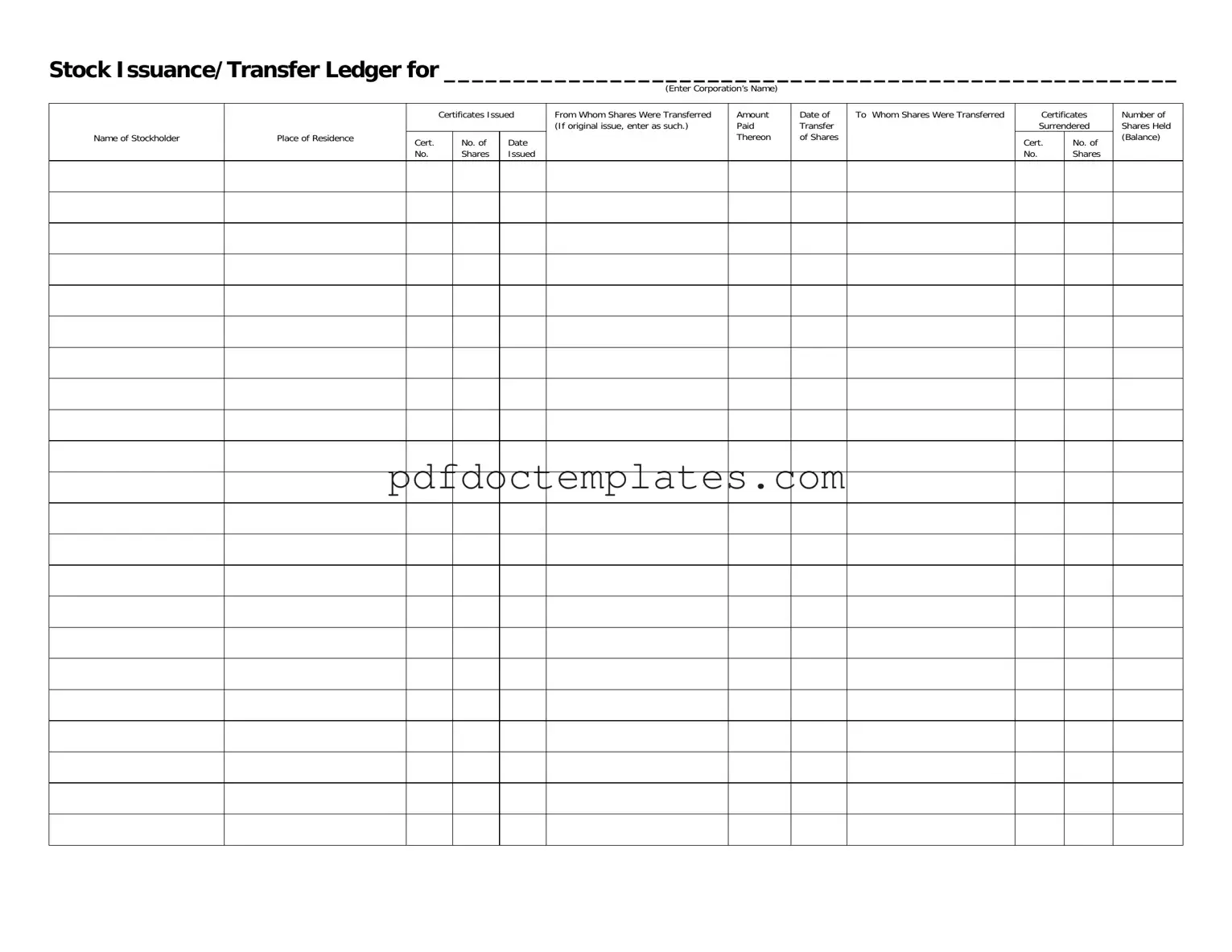Download Stock Transfer Ledger Template
The Stock Transfer Ledger form is a crucial document used to record the issuance and transfer of shares within a corporation. This form captures essential details such as the stockholder's name, residence, certificates issued, and the number of shares transferred. Properly completing this form ensures accurate tracking of ownership and compliance with corporate regulations.
To begin the process of documenting stock transfers, fill out the form by clicking the button below.
Access Your Document

